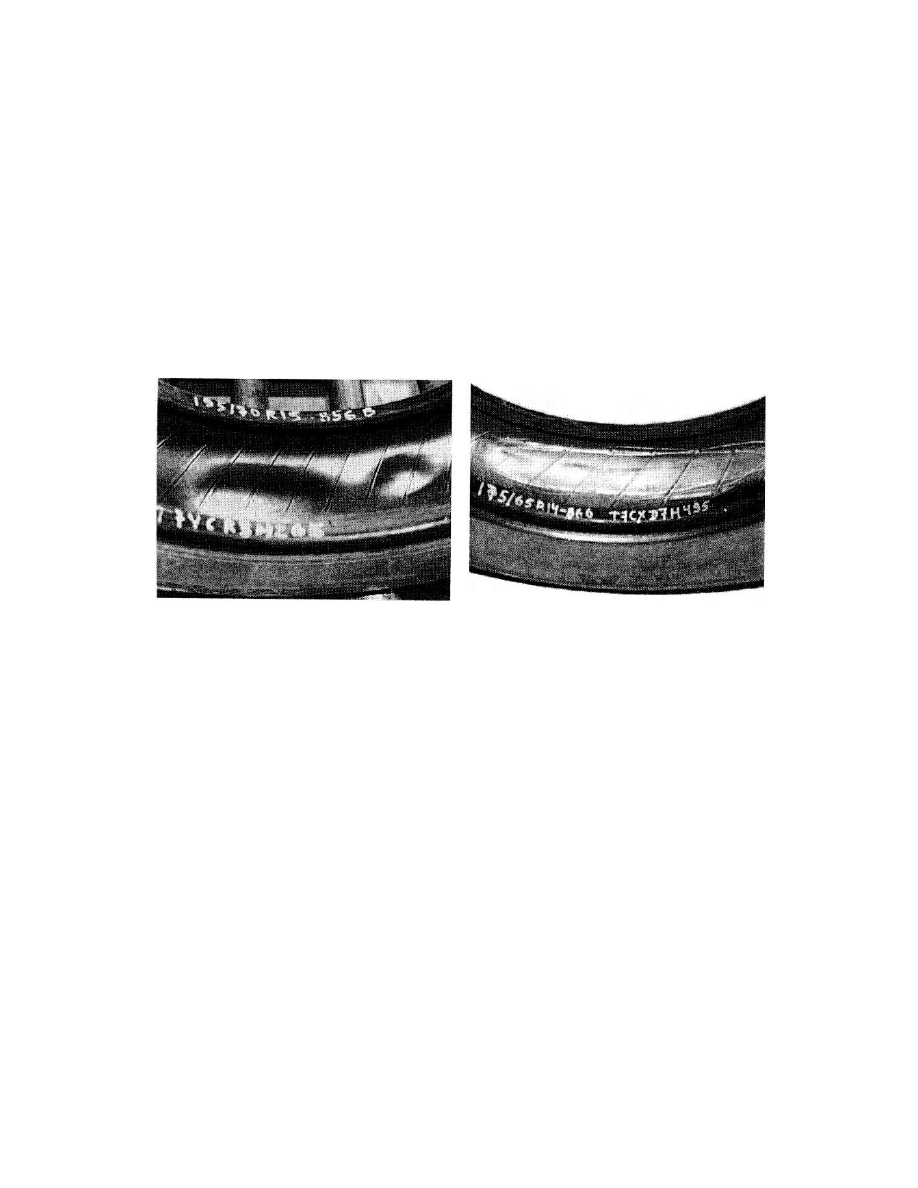Elantra L4-1595cc 1.6L DOHC (1993)

bead or improper assembly of the tire.
Observation(s):
Check tire for a bulge and/or jagged cracks visible near the rim fitting line. Sometimes the cut may not be visible when the tire is mounted on the wheel.
NOTE:
If the bead rubber is torn as a result of mis-assembly of the tire to the wheel by the assembly plant, coverage is related to the limited new vehicle
warranty and not to the tire manufacturer
Prevention:
^
Maintain proper inflation pressure and avoid overloading
^
Avoid excessive speed and sudden braking
^
Match tires with rim properly and mount tires according to proper procedure
7.
INNERLINER SEPARATION
Separation appears as a bulge inside the tire. This condition usually occurs between inner rubber and carcass ply.
Observation(s):
Vehicle vibration, a difficult to balance wheel or ride quality conditions may result from inner liner separation. To confirm this condition, the tire has to
be dismounted. A bulge in the rubber may be visible or can be confirmed by lightly pressing with fingers on the bulged rubber.
Prevention:
^
Maintain proper inflation pressure
^
Avoid overloading
^
Drive at a moderate speed Avoid sharp cornering
Conditions Not Covered By Tire Manufacturer's Warranty
Normal tire wear or wear out is not covered. Road hazard damage such as punctures, cuts, snags and breaks resulting from pothole impact, curb impact
or from other objects, is not covered. In addition, damage from improper inflation, spinning (as when stuck in mud or snow), tire chains, racing,
improper mounting or dismounting, misuse, negligence, alteration, vandalism, or misapplication is not covered.
This section provides information on the types of conditions not covered by the tire manufacturers' warranties. Review this section and the tire
manufacturer's warranty booklet. If you have any questions, please consult the tire manufacturer's distributor for specific details.
1.
SUDDEN OR EXCESSIVE FORCE CRACK OR BREAK
